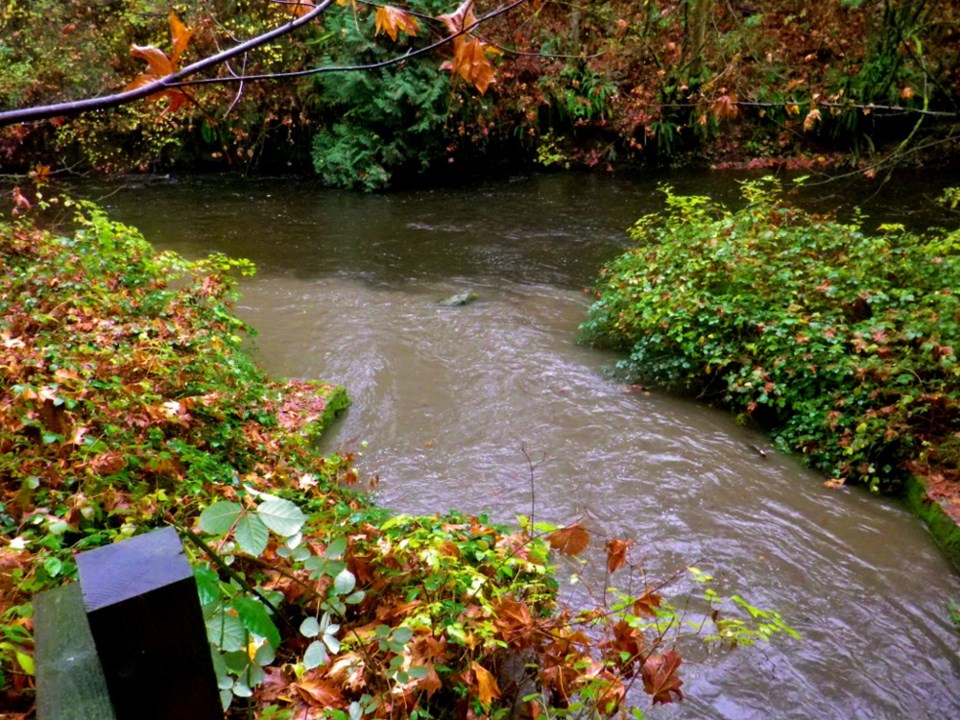A local Burnaby streamkeepers group is sounding the alarm over environmental damage after sediment began seeping into a Stoney Creek tributary last week.
John Templeton, chair of the Stoney Creek Environment Committee, said he started noticing sediment flowing into a creek tributary near Ash Grove Crescent last Thursday, and by the next day the situation had deteriorated even further.
Crews had been working in the area as part of a city rehabilitation project for Stoney Creek that began last month. The problem, as Templeton sees it, the tributary is a salmon-bearing stream which is part of the Stoney Creek watershed and home to spawning salmon.
He explained the challenge for returning fish is if the eggs get coated in the sediment, it creates a barrier where oxygen doesn’t get into the developing eggs, essentially choking them.
Templeton noted earlier in the week he counted nine salmon, and by Friday there was just one.
“It takes your heart and soul right out of it,” he told the NOW, adding the damage undermines the work the community has put into the creek. Exactly what happened and what’s being done about the situation remains unclear.
In an email to the NOW, Erik Schmidt, the Burnaby’s roads and drainage superintendent, said the city has a contractor working to replace one of the culverts on Stoney Creek. He said the heavy rainfall Friday morning caused some erosion in the construction area near Gaglardi Way. Schmidt noted crews were on-site to rectify the situation.
However, he also said he wasn’t directly involved in the project and one of the project team members would be able to provide additional details. But by press deadline on Tuesday, the NOW had still not received any further information about the problem. That leaves Templeton questioning why the city began the rehabilitation project in the fall when the rain returns, rather than the summer.



